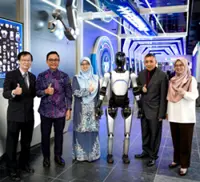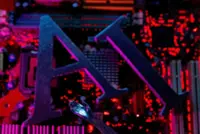Warren speaks at the Washington National Archives during a ceremony marking the 175th anniversary of congressional passage of legislation establishing the federal judicial system in the US, on Sept 22, 1964. Seventy years ago, no one outside of the US Supreme Court building heard it when Warren announced the historic Brown vs. Board of Education decision on school desegregation. Now, through the use of a voice-cloning technology, it is becoming possible for people to ‘hear’ Warren read the decision as he did on May 17, 1954, along with oral arguments by lawyers. — AP
NEW YORK: Seventy years ago on Friday, no one outside of the US Supreme Court building heard it when Chief Justice Earl Warren announced the historic Brown v. Board of Education decision on school desegregation.
Now, through the use of an innovative voice-cloning technology, it is becoming possible for people to “hear” Warren read the decision as he did on May 17, 1954, along with oral arguments by lawyers including a future Supreme Court justice, Thurgood Marshall.





